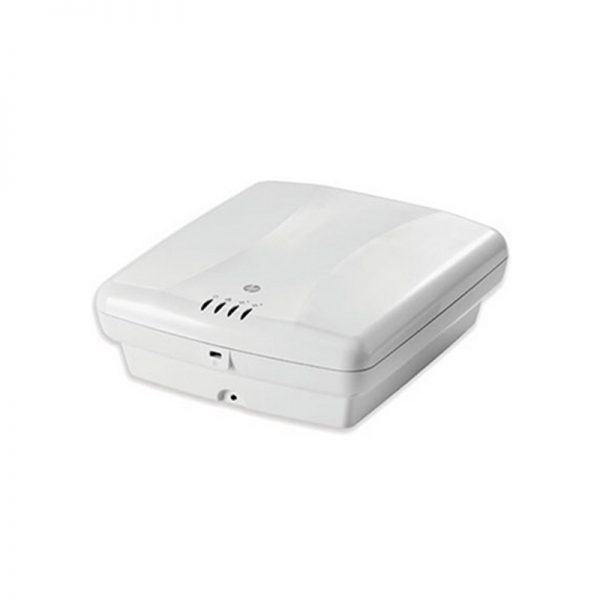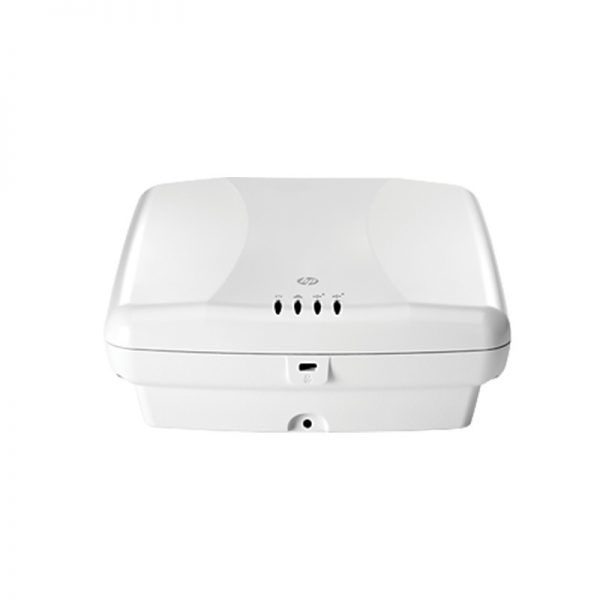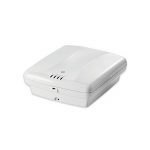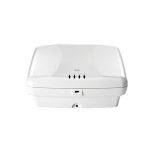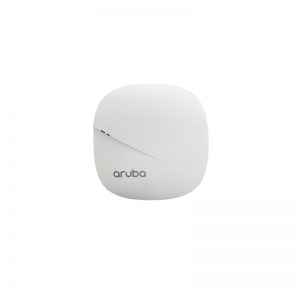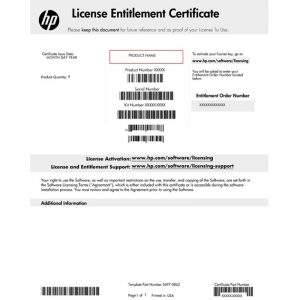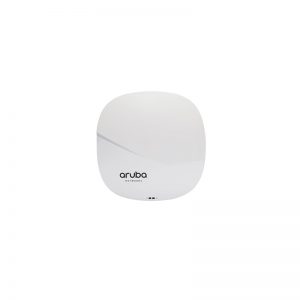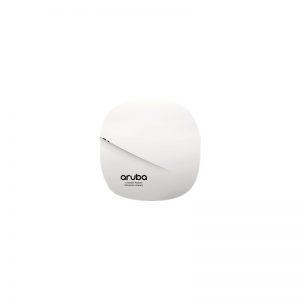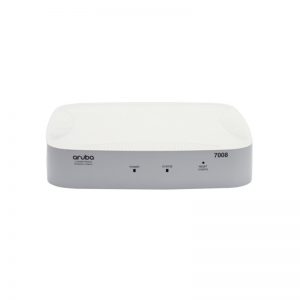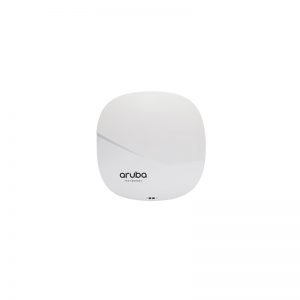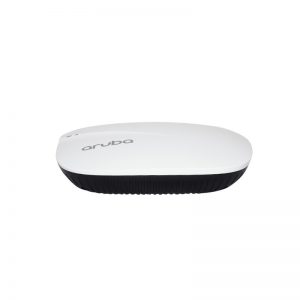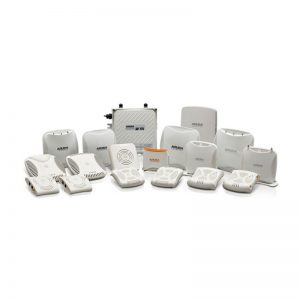Product Details
J9846A
| Model: | J9846A – HP 560 Access Point |
| Detail: | HP 560 Wireless 802.11ac (WW) AP |
Description
J9846A Specifications |
|
|
Type |
HP 560 Wireless Dual Radio 802.11ac (WW) Access Point |
|
Ports |
1 RJ-45 autosensing 10/100/1000 port (IEEE 802.3 Type 10BASE-T, IEEE 802.3u Type 100BASE-TX, IEEE 802.3ab Type 1000BASE-T); Duplex: 10BASE-T/100BASE-TX: half or full; 1000BASE-T: full only |
|
Additional ports and slots |
1 RJ-45 serial console port |
|
AP characteristics |
Radios (built-in): 802.11b/g/n, a/n/ac Radio operation modes: Client access, Local mesh, Packet capture AP operation modes: Autonomous and controlled Wi-Fi Alliance: a/b/g/n/ac Wi-Fi Certified Antenna: (3) 5 dBi 2.4 GHz and (3) 7 dBi 5 GHz Number of internal antennas: 6 |
|
Dimensions |
8(w) x 6.75(d) x 2.62(h) in (20.32 x 17.15 x 6.65 cm) |
|
Weight |
2.25 lb (1.02 kg) |
|
Memory and processor |
Dual core @ 800 MHz, 128 MB flash, 256 MB SDRAM |
|
Mounting and enclosure |
Indoor, plenum rated; Includes two ceiling mounting clips |
|
Operating temperature |
32°F to 122°F (0°C to 50°C) |
|
Operating relative humidity |
5% to 95%, noncondensing |
|
noncondensing Non-operating/ Storage temperature |
-40°F to 158°F (-40°C to 70°C) |
|
Non-operating/ Storage relative humidity |
5% to 95%, noncondensing |
|
Altitude |
up to 10,000 ft (3 km) |
|
Electrical characteristics |
Description: IEEE 802.3af/802.3at PoE compliant for Gigabit Ethernet Maximum power rating: 14 W PoE Power: 13 W PoE+ Notes: With 802.3af PoE, the 2.4GHz radio will operate in 2×2:2 MIMO mode, < 12.9watts; With 802.3at PoE+, both radios will operate in 3×3:3 MIMO mode, < 14watts |
|
Frequency band and Operating channels |
Americas: 2.412 – 2.462 GHz (1 – 11 channels) 5.180 – 5.320 GHz (36 – 64 channels) 5.500 – 5.700 GHz (100 – 144 [excluding 5600-5650 MHz] channels) 5.745 – 5.825 GHz (149 – 165 channels) European Union: 2.412 – 2.472 GHz (1 – 13 channels) 5.180 – 5.320 GHz (36 – 64 channels) 5.500 – 5.700 GHz (100 – 140 [excluding 5600-5650 MHz] channels) Taiwan: 2.412 – 2.472 GHz (1 – 13 channels) 5.280 – 5.320 GHz (56 – 64 channels) 5.500 – 5.700 GHz (100 – 144 [excluding 5600-5650 MHz] channels) 5.745 – 5.825 GHz (149 – 165 channels) Japan: 2.412 – 2.472 GHz (1 – 13 channels) 5.180 – 5.320 GHz (36 – 64 channels) 5.500 – 5.700 GHz (100 – 140 channels) Israel: 2.412 – 2.472 GHz (1 – 13 channels) 5.180 – 5.320 GHz (36 – 64 channels) Rest of World (Actual channels designated by selecting country in UI): 2.412 – 2.472 GHz (1 – 13 channels) 5.180 – 5.320 GHz (36 – 64 channels) 5.500 – 5.700 GHz (100 – 144 channels) 5.745 – 5.825 GHz (149 – 165 channels) |
|
Radio |
FCC Part 15.247; FCC Part 15.407 (US); RSS-210 (Canada); EN 300 328; ARIB STD-T66; IDA Registration (Singapore); RCR STD-33; ARIB STD-T71 (Japan); EN 301 893 (EU); KCC approval (Korea) |
|
Safety |
UL 2043; UL 60950-1; IEC 60950-1; EN 60950-1; CAN/CSA-C22.2 No. 60950-1 |
|
Medical |
EN60601-1-2 |
|
RF Exposure |
FCC Bulletin OET-65C; RSS-102; CFR 47, Part 2, Subpart J; ANSI/IEEE C95.1 (99); Ministry of Health Safety Code 6; Australian Radiation Protection Std. |
|
Mobility |
IEEE 802.11a High Speed Physical Layer in the 5 GHz Band IEEE 802.11ac WLAN Enhancements for Very High Throughput IEEE 802.11b Higher-Speed Physical Layer Extension in the 2.4 GHz Band IEEE 802.11d Global Harmonization IEEE 802.11g Further Higher Data Rate Extension in the 2.4 GHz Band IEEE 802.11h Dynamic Frequency Selection IEEE 802.11i Medium Access Control (MAC) Security Enhancements IEEE 802.11n WLAN Enhancements for Higher Throughput |





